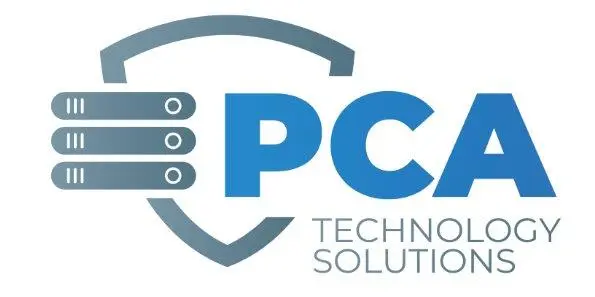10 Most Common Small Business Technology Mistakes
Small businesses are typically good at making the most out of everything possible to get by on less. However, this often causes several common mistakes when it comes to technology.
These mistakes can lead to lost data, security breaches, decreased productivity, and wasted money (and time!). As you look towards the new year and are thinking about your business growth plans, keep these mistakes in mind.
Here are some of the most common small business technology mistakes and how to avoid them:
1. Not having a technology plan:
Technology plan – you’re probably thinking, “What’s that?” One of the biggest mistakes small businesses make is not having a technology plan in place.
A technology plan outlines your business’s current technology needs, as well as your goals for the future. It helps you make informed decisions about technology investments and ensure that your technology is aligned with your business objectives. Basically, it’s a business plan for your technology needs.
And, let’s face it, your business really won’t thrive without technology, correct?
2. Not backing up data:
(Insert stunned face emoji!) Data is the lifeblood of any business, and it is crucial to have a reliable backup system in place. This will protect you from data loss due to hardware failure, software glitches, or even natural disasters.
There are several different backup options available, such as cloud backups, external hard drives, and tape backups. We all know this, right? But, it’s getting it done regularly where we tend to fail.
-
-
- Not having a backup: One of the worst things that can happen to a business is losing its data. If you don’t have a backup, you could lose everything.
- Not backing up regularly: It’s not enough to just have a backup; you need to back up your data regularly. This way, if something happens, you won’t lose as much data.
- Not storing backups offsite: If you store your backups in the same place as your original data, you could lose both if there is a disaster. It’s important to store your backups offsite, such as in the cloud or at a separate location.
-

3. Not securing your network:
Cybersecurity is essential for any business, but it is especially important for small businesses.
Small businesses are often more vulnerable to cyberattacks because they do not have the same resources as larger companies, such as an internal IT department. It is still important to take steps to secure your network, such as using strong passwords, installing firewalls, and keeping your software up to date. These steps are the basics and truly can’t be overlooked. You’re only as strong as our weakest link!
-
- Weak passwords: Using weak passwords is one of the most common security mistakes. Hackers can easily crack weak passwords and gain access to your systems and data.
- Not updating software: Outdated software is often riddled with security vulnerabilities that hackers can exploit. It’s important to update your software regularly to patch these vulnerabilities.
- Not using multi-factor authentication: Multi-factor authentication (MFA) adds an extra layer of security by requiring a second factor, like a code sent to your phone, in addition to your password.
4. Using outdated technology:
Outdated technology can be a security risk, and it can also make it difficult to do business with other companies. Make sure to keep your software and hardware up to date to avoid these problems.
Again, we all know this, but it’s expensive to replace or update, yes?
Cloud software options can help you stay up to date and spread out the pain of the expensive upgrades, too. Planning proactively to schedule your hardware upgrades will help you spread out the financial investment rather than suddenly being forced to upgrade everything all at once, because it’s no longer supported.
During the past 12 months, 73% of small business owners said they had a cybersecurity incident, according to the Identity Theft Resource Center (ITRC) Business Impact Report. This was the highest percentage of businesses reporting a cyber event in the three years that ITRC has been producing the report.

5. Not having a disaster recovery plan:
A disaster recovery plan outlines how your business will recover from a disaster, such as a fire, flood, tornado, or power outage.
Having a plan in place can help you minimize downtime and get your business up and running again as quickly as possible.
-
- If your building was wiped out by a tornado tomorrow, how long would it take you to be back in business?
- Would you have the backups needed?
- Do you know how would you replace your technology hardware?
It can provide a lot of peace of mind having this business continuity and disaster recovery plan in place.
6. Not having a budget for technology:
It is important to budget for technology expenses, such as hardware, software, and IT support.
This will help you avoid surprises down the road and ensure that you have the resources you need to keep your technology running smoothly.
7. Not taking advantage of technology:
There are a number of technologies available that can help small businesses improve their efficiency and productivity.
Some examples include cloud-based software, customer relationship management (CRM) systems, and project management tools. But, we know, there are so many confusing options out there!
How do you determine what would be best for your business? How do you make the time for that?

8. Not training employees on new technology:
When you implement new technology, it is important to train your employees how to use it. This will help them get the most out of the technology and avoid problems.
Why spend money on something your employees never use, because they weren’t trained how? But again, how do you take the time to do that when the day-to-day business takes all your time already?
9. Not having a policy for technology use:
It is important to have a policy in place for technology use. This policy should outline how employees are allowed to use technology and what they are not allowed to do.
-
-
- Are your employees allowed to use their work laptops for personal use?
- What about the software your company uses – can your employees use it for their side-gigs?
-
If you don’t have a policy in place for technology use – both allowed and non-allowed, these things are open for interpretation.
10. Not outsourcing IT support:
If you do not have the in-house expertise to manage your technology, it may be a good idea to outsource IT support. This can save you time and money and ensure that your technology is properly managed.
By avoiding these common mistakes, small businesses can use technology to their advantage and achieve their business goals.
Conclusion
Ask yourself honestly: do you have the time and expertise to manage all these items in-house?
Or do you need assistance to:
-
- train your employees on new software and security practices,
- help you sort through software options to help you achieve your business goals,
- create a technology policy outlining allowed and non-allowed uses,
- keep track of what hardware is expiring when, what to choose to upgrade, and where to buy it,
- create a business continuity and disaster recovery plan, and more?
Outsourcing or partnering with a Managed Services Security Provider (MSSP) can help take this headache off of your plate and let you get back to what you do best.
Need help?
As you look to the new year and are thinking about your business growth plans, we recommend you consider outsourcing your technology needs with an MSSP.
At PCA Technology Solutions, we work hard every day to take care of our clients to make managing your businesses a little bit easier on you. Contact us today to ask how we can help you.

